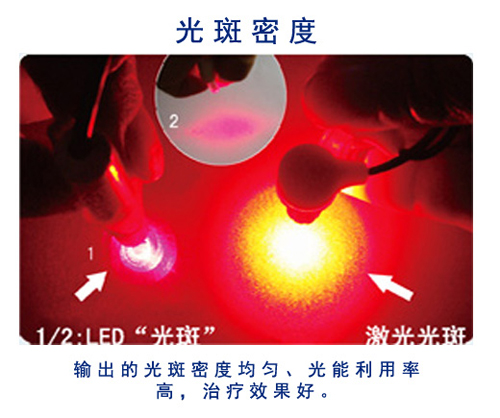New Rohm Fab Will Add Capacity for SiC Devices
 14
14
 拍明
拍明
原标题:New Rohm Fab Will Add Capacity for SiC Devices
Rohm recently announced the completion of a new building at the Rohm Apollo plant in Chikugo, Japan, that started in February 2019 to improve production capacity for silicon carbide (SiC) power devices. The new facility employs factory automation and renewable energy-saving technologies to offer 100% green manufacturing.
In an interview with EE Times, Jay Barrus, president, and Ming Su, technical marketing manager, both at Rohm Semiconductor USA, highlighted how SiC technology is evolving in electric vehicles (EVs) and industrial equipment and how Rohm is continuing to invest in this area. Barrus and Su said that Rohm is working to improve manufacturing efficiency by increasing wafer size diameter and using the latest equipment to reduce the environmental impact of manufacturing.
“From a general perspective, there are three factors to consider for being a reliable supplier: technology, cost, and supply availability,” said Barrus. “The latter is not so much an issue today but could come into play in the coming months. And we recently announced that the Apollo factory is up and running, and we expect good things in the future for production.”
“Price is something we not only recognize as real in the marketplace; we recognize it as a key element for certain applications,” he added. “We are giving our customers both the technical merits of SiC and cost structure to switch to silicon carbide.”
In addition to this new building, SiCrystal GmbH, a Rohm Group company that manufactures SiC wafers, will begin producing with 100% renewable energy, reducing CO2 emissions from energy purchases at the plant to zero. “All major SiC wafer production processes will use renewable energy,” said Barrus.

Jay Barrus
SiC facility
Rohm’s Apollo facility produces SiC solutions with sophisticated technologies. The importance of automation involves the Industry 4.0 methodology in the SiC manufacturing flow, where efficient substrate fabrication determines the success of all final devices. “There are two main features of our new facility,” said Barrus. “The first is that, being in the region we are in, we have to be aware of earthquakes. Japan, as a whole, has always been very sensitive to that, and this factory in this case is very much designed not only for production efficiency but also, more importantly, for people’s safety. The other interesting thing is the supply of electricity to the buildings through renewable resources, showing that we are an environmentally responsible company and that we manage the facilities in such a way as to have a very low carbon footprint.”
“In terms of applications, we’re pushing hard in the automotive and industrial markets,” he added. “On the automotive side, we are addressing the key applications to the electrification of vehicles with common devices such as the traction inverter and on-board chargers.”
In a conventional on-board charging system has a bridge rectifier to convert the input AC voltage to DC, but during the rectification process, there is high conduction, and switching losses and heating issues in the power conversion stage.
For SiC modules, Rohm points out that material selection is an important factor in delivering the best thermal performance. “Traditionally, power modules used a PVC that is based on aluminum oxide ceramics,” said Ming Su. He added, “But now, people want to use a more expensive ceramic material that has higher thermal conductivity, such as silicon nitride, so we can make sure that the appropriately sized chip can handle the maximum possible current without implications on parasitic elements and various inductances that limit switching speed.”

Ming Su
The goal is to provide next-generation SiC MOSFETs to optimize performance. Because of the volume and competitiveness against IGBTs, Su pointed out that cost optimization is still needed. “We plan to release the new generation for mass production by the end of this year to support the production of EVs,” said Ming Su.
“The company’s fourth-generation SiC MOSFETs use a double-trench MOSFET structure on thinner SiC dies to cut RDS(ON) by 40%,” said Barrus. “For high-power systems, the increased current density on the MOSFET chip level will be coupled with soldering and silver-sintering compatibility on both sides of the SiC die to achieve improved power-cycling reliability and better thermal performance with flexible module packages.”
The IGBT traction inverter still has a market, especially for more traditional hybrid vehicles. SiC will be more expensive than IGBTs, but it can certainly improve overall efficiency compared with IGBT progress. “We are optimizing the production efficiency of SiC using 6-inch wafers,” said Su. “And in the future, we are sure to already have preparation underway to further prepare and upgrade to 8-inch wafers that will improve productivity and lower the cost per die.”
SiC in power MOSFETs has a series of advantages compared with its silicon version counterpart, such as higher conductivity, faster switching speed, and less power loss. It also operates at a higher temperature and voltage. With such benefits, it increases the efficiency and power density of the power MOSFET.
SiC Schottky diodes offer higher switching performance, higher efficiency, higher power density, and lower system cost than silicon version counterpart. These diodes provide minimal reverse recovery, low forward voltage drop, surge current capability, high voltage ratings, and positive temperature coefficient.
The new diodes target designers of power converters for various applications, including photovoltaic solar inverters, EV chargers, power supplies, and automotive applications. It has a lower leakage current and higher doping compared with that of silicon.
The challenges for SiC diodes, on the other hand, is to differentiate in terms of performance and also offer a very good price. Rohm offers 1,200-V and 650-V solutions. Recent Schottky barrier diode products include a JBS structure, which embeds p-n junctions inside the chip that allow us to suppress the off-state leakage current as well as increase the surge current handling capability. “That product is currently available in 650 V as our Gen 3 silicon carbide diodes, and soon, we will introduce 1,200 V as well,” said Ming Su.
“Our product line for SiC starts from 650 V and goes up to 1,700 V; for GaN devices, the industry is focusing on 600 or 650 V,” said Su. “We are prioritizing the GaN development at 150 V, which will be applied to some base station applications and other power converters supporting a 40- to 48-V bus architecture.”
In the wide-bandgap semiconductors field, diamond is another material with multiple superlative properties, including unmatched thermal conductivity, high charge carrier mobilities, and high electric field breakdown strength. The physics of diamond offers enormous potential for high-power electronics technology with applications in the transportation and energy sectors. Research is currently underway in this area.

Rohm’s Apollo facility
Challenges for a greener future
Essential renewable energy solutions such as wind and solar power, often paired with energy storage, are one of the fastest-growing sectors in the industry, and wide-bandgap SiC (and GaN) technology is at the core of these solutions. Renewable energy sources continue to dominate new additions to the world’s power-generation mix. Midnite Solar is using Rohm’s SiC MOSFETs in its renewable energy projects such as the Hawkes’ Bay 600-VDC to 48-VDC 6,000-W MPPT solar charge controller, the Barcelona MPPT dual charge controller, the MNB17 advanced battery charger/inverter, and the Rosie 120-/240-V inverter/charger. Rohm reported that during Midnite Solar’s experiments, it was found that normal silicon MOSFETs have a very slow body diode, thus reducing the performance of the power systems. Therefore, in order to operate an inverter as a battery charger or bidirectional charger in the best possible way, it opted for 60-mΩ RDS(ON) SiC devices and Rohm’s latest 30-mΩ RDS(ON) products.
As the amount of people living on our planet increases, the need for a new approach on energy is pushing toward more sustainable perspectives. The coronavirus pandemic might have positive consequences: the crisis appears to be accelerating the transition from fossil-fuel to renewable energy sources. The pandemic might have given a green turn to the energy ecosystem; economically developed countries are implementing more ambitious climate policies and increasing carbon taxes, focusing on the ecological turnaround to boost recovery.
责任编辑:David
【免责声明】
1、本文内容、数据、图表等来源于网络引用或其他公开资料,版权归属原作者、原发表出处。若版权所有方对本文的引用持有异议,请联系拍明芯城(marketing@iczoom.com),本方将及时处理。
2、本文的引用仅供读者交流学习使用,不涉及商业目的。
3、本文内容仅代表作者观点,拍明芯城不对内容的准确性、可靠性或完整性提供明示或暗示的保证。读者阅读本文后做出的决定或行为,是基于自主意愿和独立判断做出的,请读者明确相关结果。
4、如需转载本方拥有版权的文章,请联系拍明芯城(marketing@iczoom.com)注明“转载原因”。未经允许私自转载拍明芯城将保留追究其法律责任的权利。
拍明芯城拥有对此声明的最终解释权。




 产品分类
产品分类















 2012- 2022 拍明芯城ICZOOM.com 版权所有 客服热线:400-693-8369 (9:00-18:00)
2012- 2022 拍明芯城ICZOOM.com 版权所有 客服热线:400-693-8369 (9:00-18:00)


